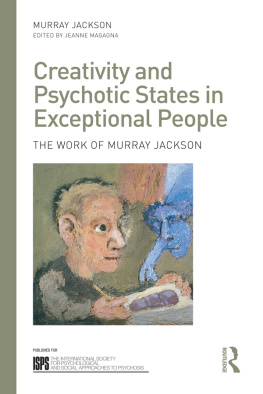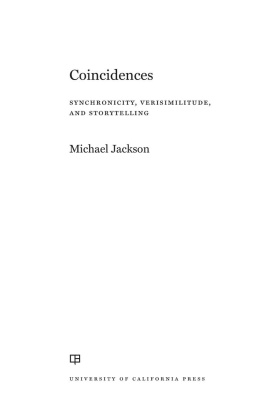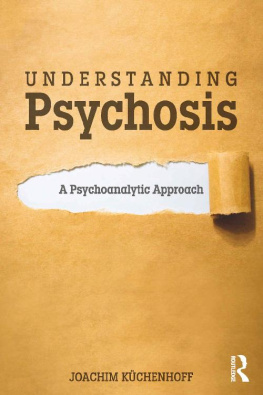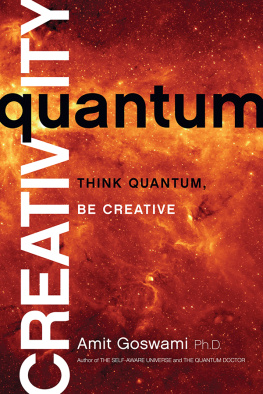Clive Hathaway Travis
So is there a link between creativity and psychosis or is it a middle-class delusion that ones son or daughter has some cross to bear for being sensitive and intelligent? Do people become mentally ill spontaneously or are they upset about something? Should we treat mental illness medicinally or, with the patient, try to understand it? I read this book hoping to find some clues, noting one of Nashs sons is no stranger to psychosis himself. Nor was van Goghs brother.
The book is firmly set in the psychoanalytic field. In this field, it often seems, people dont become mentally ill spontaneously but rather due to adverse relationships, traumatic events/circumstances and disadvantageous levels of self esteem. For example in the case of John Nash (), it is held that infantile conflicts left a terrible legacy throughout life. If these causes are understood, says the psychoanalyst, then the prospect of recovery may be available to the sufferer by psychoanalytic intervention. Interestingly, for psychosis, in cognitive behavioural therapy (CBT) it is recommended that the therapist talk to the patient about their early life, and in family intervention (NICE 2014) it is also recommended that the sufferer discuss with the family how they understand their current experiences, so we see a little common ground. There is strong research evidence that both of these types of therapy, as well as arts therapies, are helpful (NICE 2014 guideline Psychosis and Schizophrenia in Adults ). This is not to deny that other types of psychological treatments, like psychoanalysis, might seem to be, or actually be, helpful for some patients. Some might even swear by them. Any process that enables engagement with a psychotic patient, that gets them from A to B in one piece might well be regarded as efficacious.
For ten years of my life some of the best help I got, courtesy of the state, was the support of a Mental Health Act solicitor, that is a person who did not challenge my delusions. One of the things I learnt from reading this book is the possible value of working with the thoughts of the patient, be they dreams, delusions or memories. The only psychological therapy I got during this time was what I manufactured for myself, and that, I now feel, was effective. My stance would be that no treatment could be worse than the NHS regime I was subjected to over those ten years, and certainly not a scientifically proven psychological technique or even the artfulness of psychoanalytic therapy, though this is not widely available on the NHS. For, as Jackson holds, good psychoanalytic therapy is a creative process between the patient and the analyst. Although psychoanalytic and arts therapies do not have the same kind of research base as therapies such as CBT, there is research evidence, the community strongly argues, supporting the view that they can in some instances be effective. If a therapist aims to enable the patient to make sense of the world around them, then the proof of the pudding is partly whether the patient thinks they have. Your average psychiatric patient is not offered psychoanalytic approaches. Neither is it likely that the relationship between their conscious and unconscious thoughts will be explored. The reader can decide for themselves if they believe in the ideas behind psychoanalysis rather than spontaneous mental illness. Not that most practitioners dont now believe in at least some of these ideas, and see them as part of understanding where problems may have begun, or are currently maintained. For those merely interested in the relationship between creativity and psychosis, the book is written mostly in lay terms with a terse introduction so you know what the book aims to say. Where it isnt expressed in lay terms, Creativity and Psychotic States in Exceptional People is a great starting point if you are interested in learning about psychoanalytic approaches to psychosis from scratch, as indeed I have done by reading this book, which has a useful glossary of the psychological/psychoanalytic and psychiatric terms used. It also contains a review of the rather dry book A Beautiful Mind , saving you from having to read it and, at the same time, complementing the film.
The first thing I understood from my reading of this warts-and-all analysis of the books subjects (the all was not there in the film of A Beautiful Mind ) is the very factors which successful artistic endeavour are oftentimes attributed to can also impede artistic endeavour. On the other hand we find that, as illustrated by Nash, intellect can be a useful weapon in the battle against psychosis, a psychosis which anyone could understand was not ameliorated by the persecution of Nash for his sexuality. You dont have to be a Nobel laureate or a famous dancer to believe you are a superhero on a mission to save the world, as many patients and mental health professionals will tell you. So dont imagine your more humble patient, perhaps on a bipolar high, cannot identify with the Nash portrayed here, the Nash who himself campaigns for a more psychotherapeutic rather than purely medicinal approach.
Like Nash and the film, Vaslav Nijinsky () has had a rather, shall we say, incomplete version of his life story made the heavily edited diary of 1935. Even then it is apparent that both studies bear little resemblance to the psychiatric notes of the typical modern psychiatric patient, only a small proportion of whom will receive CBT, let alone psychoanalysis.
Speaking as a person who has recovered from paranoid schizophrenia, who found ten medications entirely unacceptable to take, yet regards the one I am on now as a vital component of my ongoing recovery, I have found reading this book a useful exercise. There are dangers in exposing the psychotic core of the personality in the course of psychotherapy but God knows, as do many (often only just surviving) patients, medication brings its own risks! Her Majestys Coroners ), echoing my own feelings about my years being chewed up in an insane system. We also learn that the lives of famous talented people with mental illnesses, such as Nijinsky, are no more chaotic than those of lesser known mortals, it is just that they had the eyes of the world on them.
The book is an interesting read from an historical perspective, not least in the case of van Gogh (), with whom I can certainly, as a formerly psychiatrically challenged person, identify when Jackson says through painting as a kind of therapy Vincent, unconsciously and perhaps consciously, drew and painted in order to recover and recreate harmony in his damaged internal world and thus regain his mental balance. Van Goghs lifestyle anticipated the recommendation for art therapy in the NICE 2014 guideline, Psychosis and Schizophrenia in Adults , by more than a century!
Jackson hypothesizes that paranoid delusions originate as the best possible solution to an intolerable psychological situation. From my own experience it does seem that, in fact, such fantasies can be a means of protecting ones self by creating a tolerable scenario from an intolerable one: a strategy to find a way ahead and, in fact, a form of self protection. Whether they are designed to be is probably a question for a psychological anthropologist (or somebody). But Jackson seems quite sure that in each of the cases of Nash, Nijinsky, Saramago and van Gogh, their families moulded the direction and personality of these creative geniuses.
From a lay point of view one has confidence in Dr Jackson, who certainly sounds like he knew what he was on about and was clearly a much loved and respected man. But how valuable it might have been to have him as a therapist during my lost decade as an unrecovered patient for, who knows, he might have facilitated a somewhat more rapid, even safer and a less painful route to recovery and that is the hope for psychiatry. For this book is really an appeal to complement psychiatric care with more extensive psychological therapy, whilst not replacing it, and to understand the patients life, not just their illness. Creativity and Psychotic States demonstrates that a person might have a greater chance of recovery if their care team adopted a more eclectic approach and should be set reading on any psychology course.










